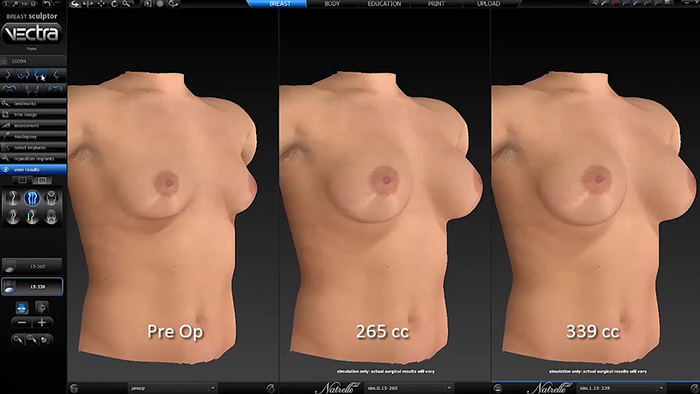Breast augmentation surgery continues to be the most popular cosmetic procedure in the world. And while thousands are performed everyday, not all of these procedures deliver the kind of result that the patient was hoping to achieve. Why are some breast augmentations more successful than others?
Dr. James Namnoum of Atlanta is a leading expert in the field of breast surgery. In his many years performing breast augmentations, he has found there to be 4 critical steps that, when followed, help to deliver a truly successful outcome.
#1 Office Must Be Patient-Centric
The first critical step in ensuring an exemplary outcome from your breast augmentation surgery is to to make sure that your plastic surgeon’s office is “patient-centric”. From the moment you first call the office to inquire about a breast augmentation, going in and being greeted by the receptionist, to being taken back by the nurse and meeting the surgeon, the focus ought to be on you. The whole experience should be crafted around the patient.
As Dr. Namnoum explains, they are the center of the universe and, “it’s our job to meet their expectations and deliver on their hopes and dreams.” The most important element here is communication. The surgeon and his team need to really listen to what you are saying, but they also need to read between the lines. Oftentimes, patients come in thinking that they want a certain implant, but then the photos that they show of their desired outcome are completely different. It’s the surgeon’s job to decipher the desires and translate them into a treatment plan that will work with individual anatomies to deliver the ideal look.
#2 3D Imaging = Successful Breast Augmentation
The second most important component of a successful breast augmentation is that the surgeon have a 3D representation system for analysis. For Dr. Namnoum, it’s Vectra 3D imaging. This system allows him to develop a 3 dimensional image of what patients will look like with any kind of implant. If patients want to see what they would look like bigger, it can show them bigger. If they are curious as to what a shaped implant might look like, it can show them that, as well as what their breast might look like with a bit of fat grafting. This powerful tool can even show patients what their breasts would look like with a breast lift. Furthermore, patients can study these images later at home on your phone or computer.
A system of analysis like the Vectra 3D allows the patient to “try on” different types of implants, in addition to the opportunity to sit with an expert surgeon and discuss your various options in terms of implant size, type and placement. This tool helps your surgeon to treat you holistically by showing you how your new breasts will fit with your hips, tummy, thighs and buttocks. It allows him or her to really tailor a result that is “crafted to the needs of the patient,” explains Dr. Namnoum.
#3 Plan of Treatment
The third critical element is to not only have a plan of treatment that is tailored to the individual patient, but to be able to execute around that plan. In order to do this, your surgeon must:
- understand the literature
- have the experience to know what makes a good outcome
- be persnickety in the operating room
- be up to date on the best practices and employ them
#4 Good Aftercare
Pain management is a significant part of the recovery process. With many breast augmentations, the implants are placed partially under the muscle. This delivers adequate soft tissue coverage in the upper part of the chest and helps to camouflage the implant so that there is no visible wrinkling. Surgery involving the muscle leads to greater soreness during recovery.
In the past, this pain was managed with narcotics, a great solution for pain control, albeit with a handful of side-effects no patient wants. Instead of relying mainly on narcotics, Dr. Namnoum manages his patients pain sequentially by using Tylenol, Advil, and a muscle relaxant, given around the clock. Narcotics are used as needed. Patients experience much better pain control while feeling better; it’s a win win.
Another important component of good aftercare is support garments. Dr. Namnoum likes for his breast augmentation patients to wear a soft, comfortable bra to bed so that when you roll around, your breast is supported or splinted. This way, there is much less trauma and the tissues can heal more quickly.
And finally, you want to look for a surgeon who is going to be part of your team for life. As Dr. Namnoum explains, “we’re their family. They can come to us and we’ll help them.”



















Facebook
Twitter
Instagram
YouTube
RSS